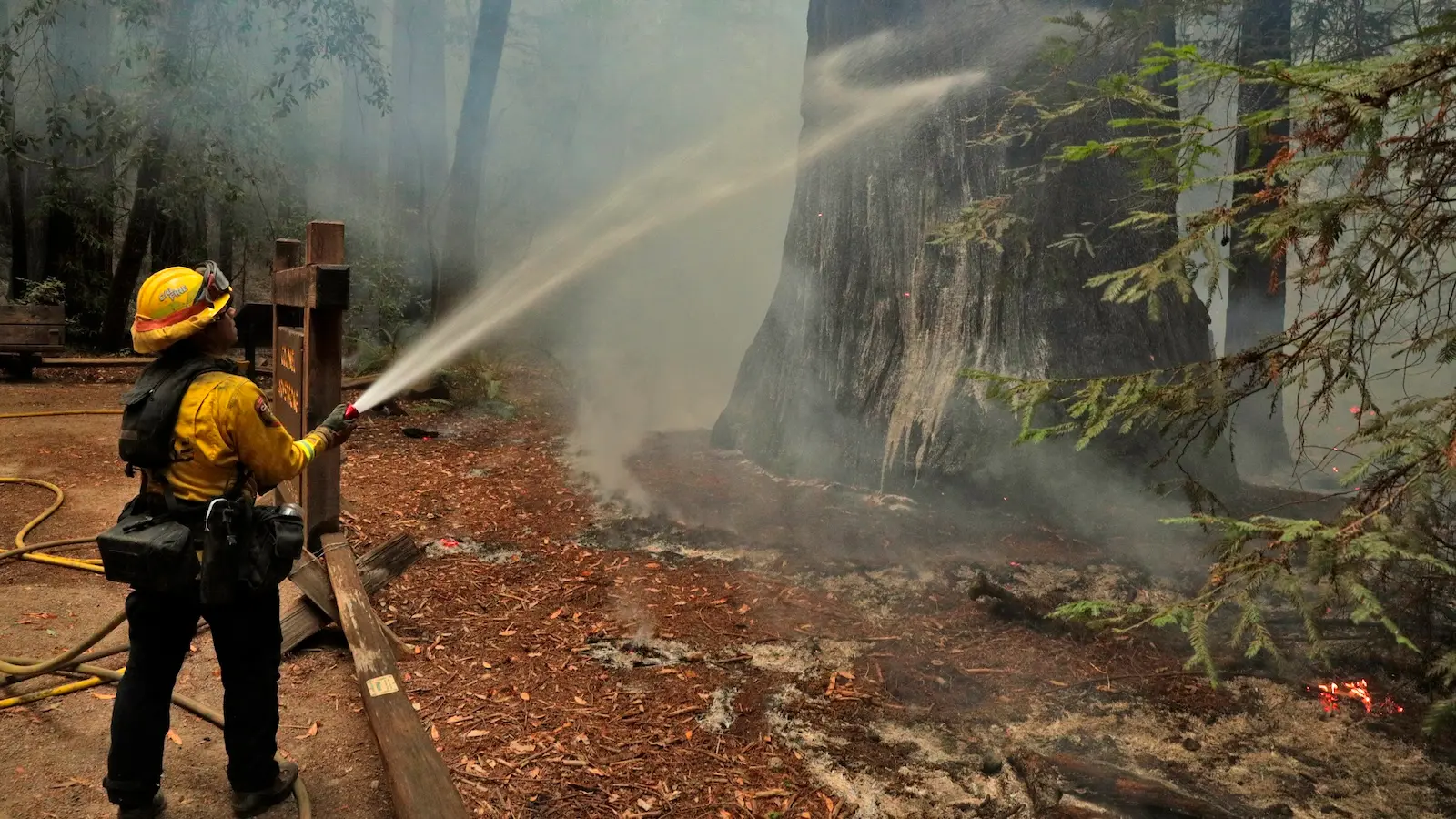By Frida Garza Getty Images
“There is a good bit of interest,” said Alan Snipes, CEO of Cross Plains Solutions. He estimated that his company’s product, aptly named SoyFoam, is now being used in 50 fire departments around the country, mostly in the Midwest. That’s not a coincidence: Snipes pointed out that many rural fire departments in the middle of the country depend on volunteer firefighters. “A lot of the volunteers are farmers, and a lot of the farmers grow soybeans,” he said.
Cross Plains began to look into creating a PFAS-free, soy-based firefighting foam after being approached by the United Soybean Board. Snipes was first in touch with the board more than 30 years ago, when he worked in the carpet industry and started using soy-based compounds to manufacture backing for commercial carpets. He started Cross Plains Solutions about 13 years ago to produce a bio-based cooling gel for mattresses. Then, three years ago, the United Soybean Board offered the company funding to develop and test a biodegradable firefighting foam.
The board, whose members are appointed by the US Department of Agriculture, exists to collect one-half of one percent of the market price of every bushel of soybeans sold by US farmers. This congressionally mandated process, called the soybean checkoff program, is used to fund research into new markets for soybeans.
The United Soybean Board partners with both public and private actors, like universities and corporations, to fund research into and commercialization of new soybean uses. Often, this looks like investing in more sustainable alternatives to fossil fuels — like using soybean oil as a petroleum replacement in tires, straws, and shoes. In a partnership like the one with Cross Plains, the checkoff program is hoping to create a business opportunity that might help farmers sell more bushels down the line. The result is a “win-win,” said Philip Good, chair of the United Soybean Board.
After King returned home to Kentucky, his fire department voted to exclusively use SoyFoam going forward; according to King, it was the first in the country to do so.
SoyFoam is not unique. There are other alternatives to PFAS-based firefighting foams on the market with different formulations and applications, said Danielle Nachman, a senior staff scientist at the Johns Hopkins University Applied Physics Laboratory. “They can span all kinds of chemistry,” said Nachman. Some are bio-based, like a gel made with canola oil, while others try to replicate the chemical properties of PFAS without relying on fluorinated compounds.
The big hurdle for SoyFoam and other PFAS-free firefighting foams is meeting requirements set by the Department of Defense for military firefighting and training activity. PFAS-containing firefighting foams were first patented by the United States Navy in the 1960s, following a series of devastating fires on aircraft carriers and other ships. In the 1970s, virtually every US military base began using these foams for emergencies and training exercises — leading to dangerous contamination in the surrounding areas.
“The majority of the headache when it comes to PFAS [in firefighting foams] is the military application,” said Mohamed Ateia Ibrahim, an adjunct assistant professor of chemical and biomolecular engineering at Rice University, “because of all of the military bases and the training activities.”
The Department of Defense has been working to transition away from firefighting foams that contain PFAS — but SoyFoam has a ways to go before it could be fully embraced by the military. The Pentagon has not tested Cross Plains Solutions’ product, but Snipes said the agency has encouraged the company to seek further funding to continue its R&D.
The Department of Defense didn’t respond to Grist’s request for comment.
Ibrahim said he supports the development of bio-based, PFAS-free foams, but that companies need to be more transparent about what exactly goes into their products. “We need more clarification about the other components and whether they are, as a whole, really better or not” than PFAS-based firefighting foams, said Ibrahim.
According to Snipes, SoyFoam is made up of things you could find in your pantry — although when asked to specify what those components are, he demurred, calling the information proprietary.
